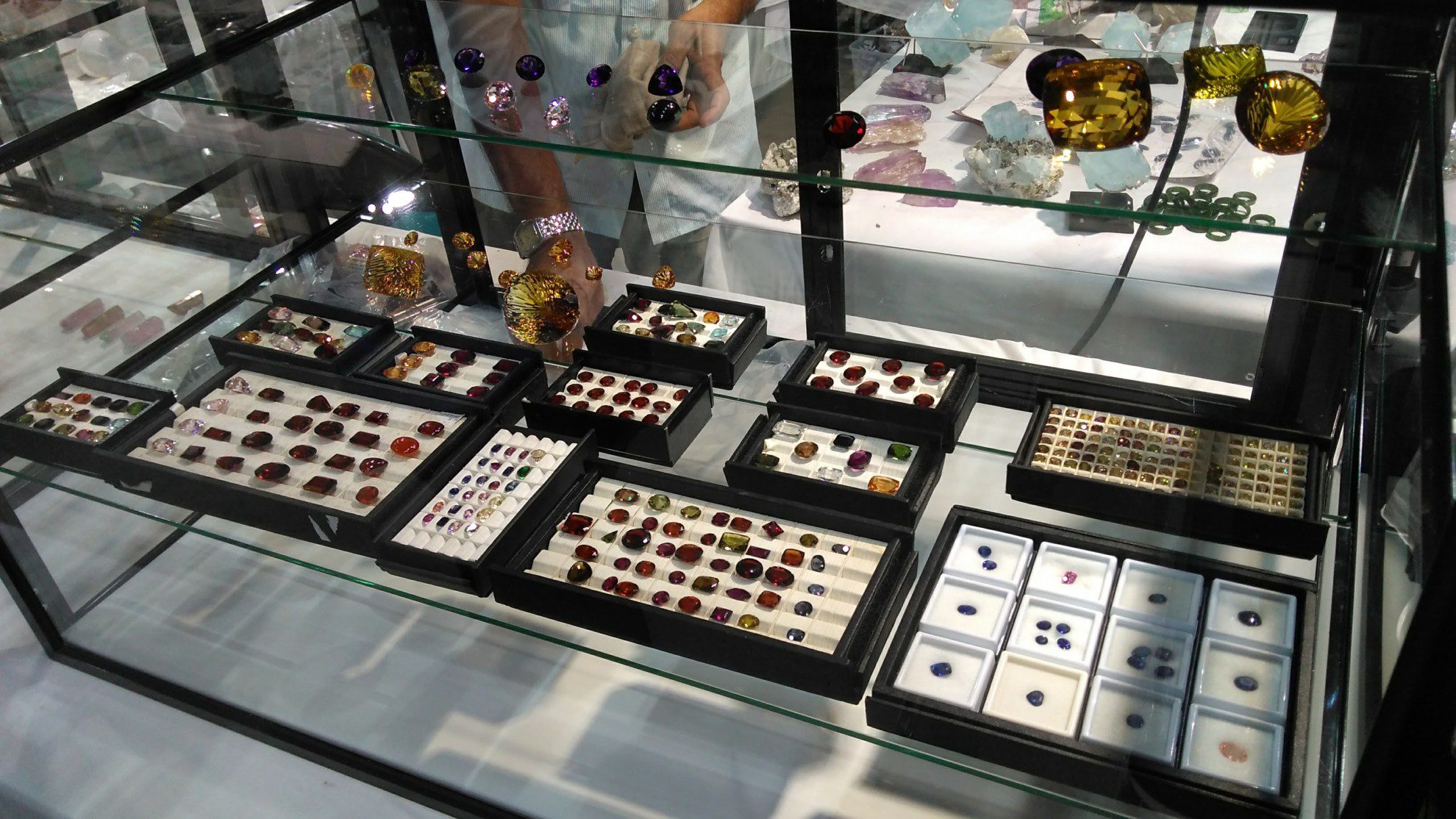Denver Gem & Mineral Showcase 2017
With over 900 vendors and numerous geologic rarities, the 2017 Denver Gem and Mineral Showcase had plenty to see. Read about some highlights in our report!
2 Minute Read
This year, Denver's annual Gem and Mineral Showcase, comprised of twelve separate shows, was held from September 8-17th. With a wide variety of vendors, there was something for everyone. From dyed agate slabs and simple strands of freshwater pearls to rare fossils and trapiche gems, the diverse displays were almost as incredible as the pieces themselves. Here are a few trends and highlights from the show.
Purple Chalcedony (Grape Agate)
A recent find in Indonesia, purple chalcedony in botryoidal form took over the show. This material, actually marketed as "grape agate," has a lovely form. High-quality specimens have a nice color and excellent sparkle. Most of the material, however, is somewhat dull.
Tanzanite
Another popular rarity, tanzanite's blue hues could be seen on many tables. Most of the rough was small with poor color saturation. Due to Tanzania's ban on tanzanite rough export, there are never many large rough gems. However, a few pieces, exported before the ban, made it to the show.
Trapiche Emeralds and Rubies
A small selection of extremely rare trapiche gems were on display. A few small, opaque trapiche rubies were available at the Artisan Jade booth at the Colorado Mineral and Fossil Fall Show. In addition, AA Colombian Emeralds at the Denver Coliseum Show and New Era Gems at the Denver Mineral Show each had a couple dozen trapiche emeralds.
Gold Sheen Sapphires
Unique to a mine in northeastern Kenya, these untreated specimens of corundum exhibit a beautiful sheen. This sheen arises because hematite or ilmenite inclusions formed as dense platelets or needles. These gems, displayed at the Goldsheen Sapphires booth at the Denver Mineral Show, can have a yellow, red, or blue body color.
Blue Amber
There was a lot of amber around, some red, some yellow, some nearly colorless, and many with insects. However, the amber at the Indogems booth was more unique. Blue amber, found in Indonesia, the Dominican Republic, and Mexico, is a rare gem. The blue color, only present in amber from the extinct Hymenaea protera tree, is a result of surface fluorescence under ultraviolet light. In fact, perylene, an aromatic hydrocarbon, is the chemical responsible for this fluorescence. When incandescent light shines through these gems, the internal yellow to red color is visible. The Usambara effect, where the path length of light alters the color seen, is also present in these ambers.
Rainbow Lattice Sunstone
Discovered in 1985, rainbow lattice sunstone from the Harts Range in Australia exhibits beautiful patterns and iridescence. Another rare gem, this is a moonstone with inclusions of hematite and ilmenite, creating the unique iridescent lattice with parallel lines and equilateral triangles visible.
Other Rare Gems
Of course, many other rarities were on display. Lapidaries purchasing rough sought out grape garnets, which are rapidly gaining popularity, and bright orange spessartites. In addition, a bit of searching revealed a few cat's eye jades, star sapphires, and alexandrites. The main show, themed "Gold and Silver" for its 50th anniversary, had an abundance of rare minerals, with fantastic crystalline specimens of gold and silver on display.
Addison Rice
A geologist, environmental engineer and Caltech graduate, Addison’s interest in the mesmerizing and beautiful results of earth’s geological processes began in her elementary school’s environmental club. When she isn’t writing about gems and minerals, Addison spends winters studying ancient climates in Iceland and summers hiking the Colorado Rockies.
Related Articles
Tanzanite (Zoisite) Value, Price, and Jewelry Information
Amber Value, Price, and Jewelry Information
Emerald Value, Price, and Jewelry Information
Sapphire Value, Price, and Jewelry Information
Latest Articles
800 Years of Mogok: A Celebration in Tenuous Times
What is the Average Gemstone Faceting Yield?
Pyroxmangite Value, Price, and Jewelry Information
How to Identify Emerald Simulants and Synthetics
Never Stop Learning
When you join the IGS community, you get trusted diamond & gemstone information when you need it.
Get Gemology Insights
Get started with the International Gem Society’s free guide to gemstone identification. Join our weekly newsletter & get a free copy of the Gem ID Checklist!
